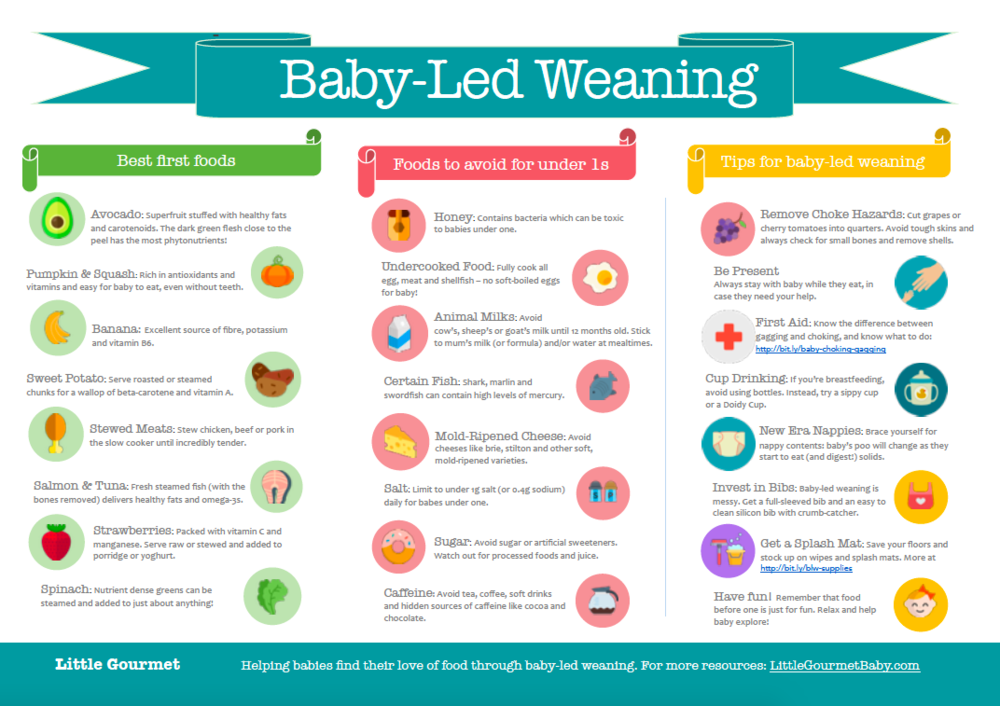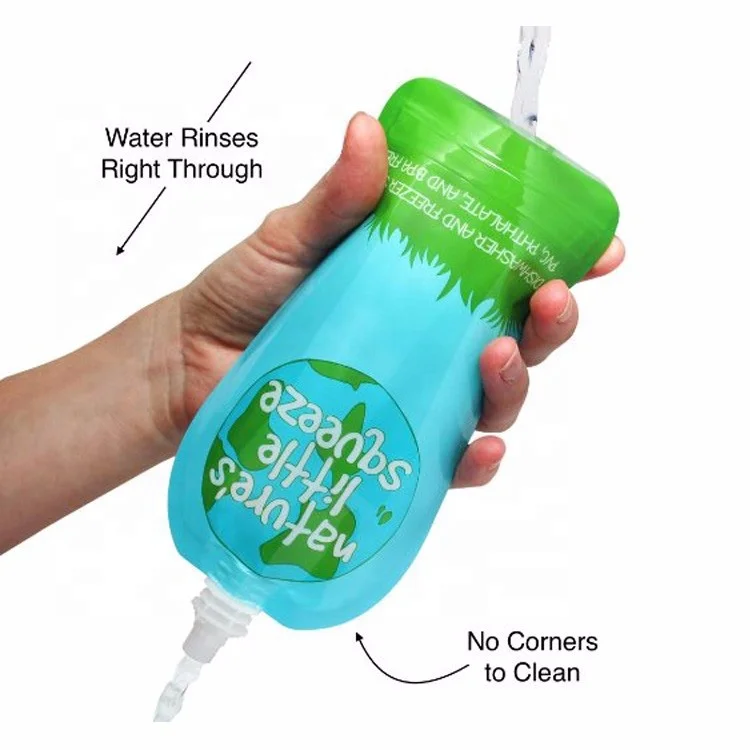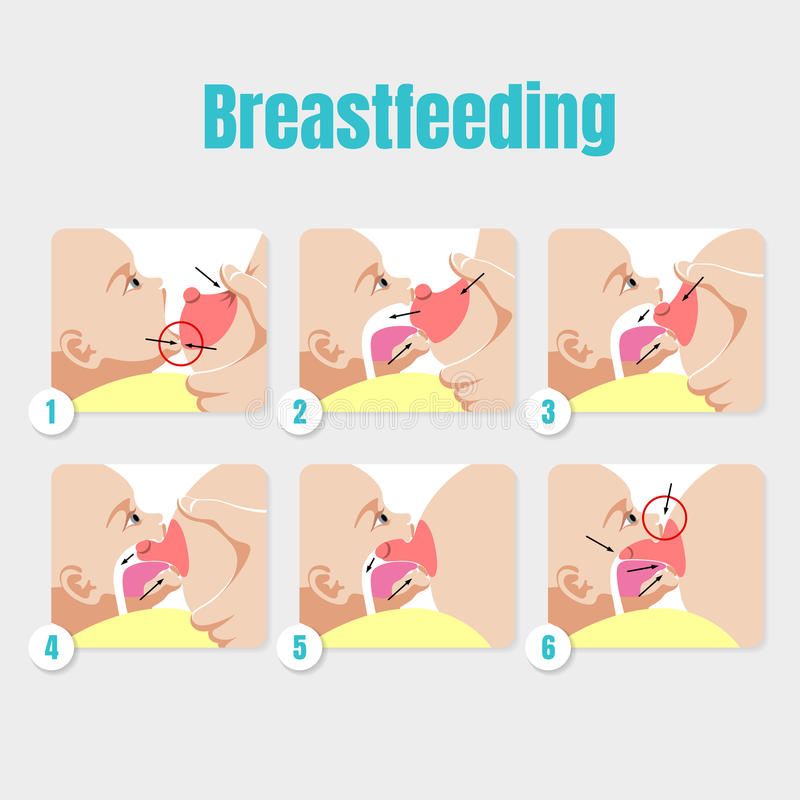What to do if baby is not taking bottle feed
Bottle Refusal - The Institute for Breastfeeding and Lactation Education (IABLE)
It can be very stressful for parents when their baby has a hard time taking a bottle. Here are some tips that have been helpful for some families, and hopefully will be helpful for yours, too.
Try having someone other than mom offer the bottle.
It makes sense that babies associate feeding with the comfort of nursing. For some babies, mom needs to be out of the house, not just in another room, for them to take the bottle from another caregiver.
Try offering the bottle when the baby is not very hungry.
When babies are having a tough time taking a bottle, it can help to offer it between feedings, or when the baby is not very hungry. Learning a new skill takes patience and effort, and we all have more of both when we feel well rested and calm.
Try feeding the baby in different positions.
Babies are unique in their preferred feeding positions. Preferred positions for breastfeeding are typically different than those preferred for bottle feeding. Try holding the baby facing out to look around the room or sitting propped up on your legs.
Try moving around while feeding the baby.
Feeding the baby while you are walking around the room and gently bouncing or swaying may help some babies take the bottle.
Try allowing the baby to latch onto the bottle nipple herself rather than putting it directly into her mouth.
You might tickle the baby’s upper lip and nose with the bottle and wait for her to open wide to latch onto the nipple, similar to how she would latch on to a breast. Be sure she latches onto the wide base of the nipple and not just the tip, with both lips flanged outward, as she would when breastfeeding.
Try wrapping the bottle in a shirt or cloth that mom has worn, so it smells like her.
Some moms sleep with a burp cloth and then wrap it around the baby’s bottle.
Try different temperatures of milk in the bottle.
Some babies prefer warmed milk, others room temperature milk, and others cold milk. Experiment a bit to see if your baby has a preference. You may also try warming the bottle nipple (holding it under warm water) before the feeding so it is not cold. For a teething baby, chill the bottle nipple in the fridge before the feeding.
Try different bottle nipples.
The extensive choice of bottle nipples available at stores can be overwhelming, and unfortunately there is not one “best” nipple. The most expensive bottle/nipple combinations aren’t necessarily better than the less costly options. Look for a long, straight nipple rather than a short, flat one, so that the baby latches deeply on the bottle like she would at the breast. Consider trying a nipple that is “newborn” or “slow flow” so the milk comes out more slowly and doesn’t overwhelm the baby. However some babies might prefer a faster flow nipple, especially if you have a fast and furious letdown. You may also try silicone versus rubber nipples.
You may also try silicone versus rubber nipples.
Try tasting and smelling your breastmilk.
Many women notice that their expressed breastmilk smells strong or tastes soapy. One theory is that this is due to the lipase enzyme which naturally breaks down the fats in breastmilk. Another thought is that the altered smell and taste may be related to certain fats in your diet, particularly fish oil or other oil supplements. You may even try to stop eating fish for awhile or withhold fatty acid supplements to see if that helps. This breastmilk is perfectly safe for babies to drink, but some do not like the taste of it.
Try feeding the baby with something other than a bottle.
You may try feeding the baby with a spoon, sippy cup or regular open cup (perhaps a small medicine cup or shot glass). Hold the baby in your lap in an upright, supported position. Bring the spoon or cup to the baby's mouth and allow the baby to take the milk herself by just touching the milk in the spoon or cup to the baby’s upper lip. Let the baby set the pace. Be very careful to not dump the milk into the baby's mouth to avoid choking.
Let the baby set the pace. Be very careful to not dump the milk into the baby's mouth to avoid choking.
Try “introducing the mouth to the bottle” rather than trying to get the baby to drink.
Step 1: Bring the nipple (no bottle attached) to the baby's mouth and rub it along the baby’s gums and inner cheeks, allowing the baby to get used to the feeling and texture of the nipple. If the baby doesn’t like this, try again later.
Step 2: Once the baby accepts the nipple in her mouth, encourage her to suck on the nipple. Without the bottle attached, place your finger inside the nipple hole and rub the nipple gently against the baby’s tongue.
Step 3: When the baby is comfortable with the first two steps, pour some drops of milk into the nipple without attaching the nipple to the bottle. Start by offering small sips of milk, making sure to stop when the baby shows that she has had enough.
If your baby still doesn’t take the bottle after you’ve tried these tricks.
Can you shift your schedule so that you can take a break from work to go to your baby and breastfeed her there? -Can your caregiver bring the baby to you to breastfeed throughout the day? -Can you telecommute/work from home for a while?
My baby will finally take a bottle, but generally won't drink much at daycare.
Some babies do something called “reverse cycle nursing” when their moms go back to work. They spend most of the day sleeping/not eating and then at night feed frequently to make up for all of the eating they missed out on during the day. Some moms like reverse cycle nursing because it means they do not have to pump as much milk during the day. However, the interrupted sleep makes it really rough for mom to meet her own sleep needs. Some families are able to work out their own system to help the mom get as much sleep as possible while still attending to the baby’s nighttime nursing needs. Here are a few tips for getting as much rest as you can:
Sleep in, go to bed early, or sleep when the baby sleeps whenever you have the chance.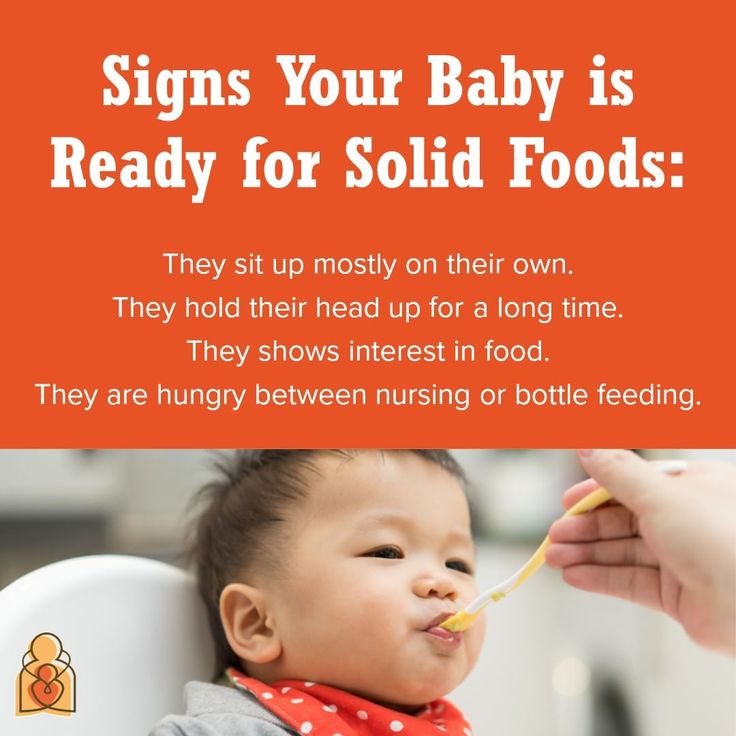
Sleep near your baby. Options include a crib in your bedroom or a co-sleeper attached to your bed.
Try to do more work early in the day so you are able to wind down and go to bed earlier in the evening.
Prioritize the things you need to get done, and enlist friends and family to help out so you can possibly spend some of that extra time sleeping.
What to do when baby won’t take a bottle
When your breastfed baby won’t take a bottle, it can be stressful and even a little scary. Babies are not always onboard when transitioning from breast to bottle. Whether you’re going back to work or want others to help feed your baby, you might start to wonder: “What if my baby never takes a bottle?”
Don’t panic. Usually when your baby won’t take a bottle, they’re just struggling with the learning curve. They’re new to the world so they have a lot to learn. Sometimes there may be some motor skill or medical condition making it more difficult. But no matter the reason, we’re here to help.
Keep reading to learn the most common reasons why your baby may be refusing a bottle, tips for helping them get used to a bottle, and what may be going on if bottle feeding doesn’t start to improve.
Not all bottle refusal looks the same. There can be a range of signs that your child is struggling to take a bottle, including:
- Turning away from the bottle
- Gagging or fussing as the bottle’s nipple nears their mouth
- Being unable to latch/compress the bottle’s nipple and express milk
- Chewing on the bottle’s nipple
- Sputtering or coughing while feeding
- Not being able to completely swallow their sip of milk, so that some drips from their mouth
Why do many babies have problems when switching to a bottle after breastfeeding?
There’s no one-size-fits-all answer to this question. In most cases, bottle feeding problems aren’t due to abnormal oral motor function, nor are they usually due to an underlying medical issue.
Actually, one of the most common reasons breastfed babies won’t take a bottle right away stems from not being introduced to one early enough in their growth. In fact, the number one mistake families make is offering a bottle too late.
Why timing is so important when introducing a bottle to a breastfed baby
Babies are born with an automatic sucking reflex. But at 2 to 3 months old that reflex becomes voluntary. In effect, that gives babies the ability to turn down a feeding if they’re not comfortable with it.
If a baby hits this stage in their growth and has only fed from their mother’s breast, they may have developed a “preference” for that method of milk delivery. Babies establish a suck-swallow-breathe pattern that works for them and lets them handle their mother’s milk flow.
When given a bottle, not only is the milk flow different, a baby has to adapt to a different nipple shape and texture. They also need to slightly adjust their posture from what they’re used to.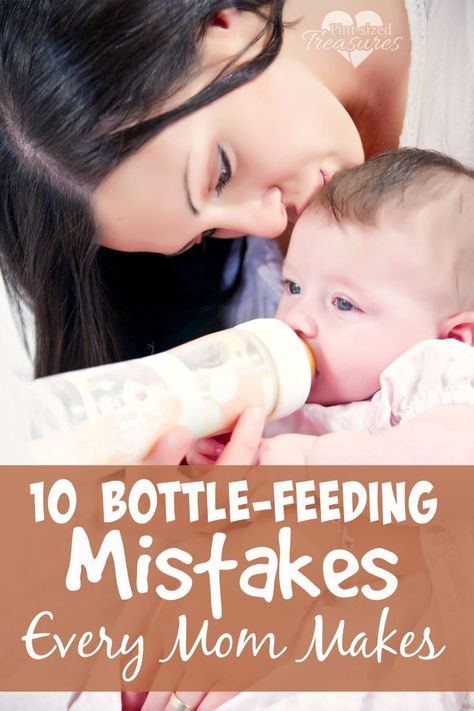 For someone so new to the world, making these kinds of changes can be hard and overwhelming, leading to fussing, tears and why your breastfed baby won’t take a bottle.
For someone so new to the world, making these kinds of changes can be hard and overwhelming, leading to fussing, tears and why your breastfed baby won’t take a bottle.
When to introduce a bottle to a breastfed baby
There’s an ideal window of time for introducing a bottle to a breastfed baby. You want to avoid doing it too late, but you also don’t want to do it too early. It’s important to make sure your baby gets the hang of breastfeeding and is getting enough milk before introducing a bottle.
We usually recommend waiting about 2 to 4 weeks after your baby is born before trying to bottle feed. Unless they were born early, most babies are ready by then.
How to get a breastfed baby to take a bottle: 5 helpful tips
1. Switch back and forth between breastfeeding and bottle feeding
You give your baby the best chance at developing their feeding skills if you regularly switch between bottle and breast in the midst of feedings.
2. Try giving the bottle when your baby is waking up
No matter the time of day, babies are more likely to take a bottle when they’re just waking up. The instinct to eat takes over when babies are still a little sleepy. Don’t let your baby get overly hungry before feeding. That can result in fussiness and crying (a late feeding cue), and make it harder to initiate feeding either by bottle or breast.
The instinct to eat takes over when babies are still a little sleepy. Don’t let your baby get overly hungry before feeding. That can result in fussiness and crying (a late feeding cue), and make it harder to initiate feeding either by bottle or breast.
3. Create a relaxing environment each time you offer the bottle
Play soft, calming music – like classical or folk. Sit down someplace where you can gently rock back and forth. And swaddle your baby with their hands near their face. Having a quiet, dark room with few distractions can help, too.
Doing these things will relax your infant – in part because they will also relax you. Children sense and feed off the energy of the adults around them. And it’s no different when you and your baby are adjusting to bottle feeding. If you can be at ease with the varied routine a bottle brings, your baby will be more content, too.
4. Have a family member other than mom offer the bottle whenever possible
Each person will hold your baby a little bit differently for feedings. When your little one can get used to these differences early, it helps them learn how to adjust their posture so it’s less likely to be an issue when their sucking reflex becomes voluntary.
When your little one can get used to these differences early, it helps them learn how to adjust their posture so it’s less likely to be an issue when their sucking reflex becomes voluntary.
5. Try giving your baby a different type of bottle or nipple
Sometimes, the solution to bottle feeding problems is as simple as finding the right bottle or nipple. While there are nipple levels associated with age, every baby has their own feeding style, which may not match their age or size. There are many different nipple and bottle types out there – trying to figure out the best choice can be an overwhelming process. Finding the right fit is something that your baby’s doctor or a lactation specialist can help you with.
6. Experiment with baby’s bottle-feeding position
Your baby may also prefer to eat while in a certain position, which typically differs from breastfeeding positions. Try different angles and placements to see if there is one they favor. For example:
- Cradling them in your arm at a 45-degree angle while keeping their head and neck aligned.

- Sitting upright so that their back is against your stomach.
- While sitting or lying down, bend your legs and position your baby so they face you with their head resting against your knees, their back against your thighs and their feet on your stomach.
No matter what position you use, remember to angle the bottle so that milk only comes out when your baby sucks, and never prop the bottle in their mouth. Also remember to never lay your baby completely flat while feeding.
What to do when an older baby is refusing to take a bottle
The breast to bottle transition is certainly easier if you introduce a bottle at the right age. But even if your baby is already 2 to 3 months old, it’s still possible. In addition to the tips above, you can help your baby practice with a pacifier.
A pacifier can help babies form and strengthen their sucking ability. Consistently offer a pacifier to help soothe your baby when they’re fussy, if you’re not already. This helps your baby learn to organize their mouth movement, which will calm them. Once that becomes routine, begin offering your baby a pacifier for 20 to 30 seconds when you go to make a bottle. Doing so will help them more calmly prepare for bottle feeding.
This helps your baby learn to organize their mouth movement, which will calm them. Once that becomes routine, begin offering your baby a pacifier for 20 to 30 seconds when you go to make a bottle. Doing so will help them more calmly prepare for bottle feeding.
Gently pull on the pacifier as your baby sucks it. Make sure to do this at least 3 to 5 times a day, including when your baby is using the pacifier to prep for a bottle feeding. These slight tugs will help your baby learn how to resist releasing the seal they’ve formed on the pacifier’s nipple. And that can strengthen their latch on a bottle’s nipple, too.
When the above tips don’t work, there may be another reason your baby is refusing a bottle
If you’ve been trying at-home strategies for a few days and your baby doesn’t seem to be getting more comfortable taking a bottle, call your baby’s doctor. They can help determine whether a medical issue may be present or connect you with a specialist if needed. Other reasons why your baby is refusing a bottle can include:
Reflux issues can cause pain with eating
Babies can get heartburn, too! When a baby has reflux, food and stomach acid flow from the tummy back into the esophagus (the tube the carries food from the mouth into the stomach).
Reflux causes babies to feel discomfort or pain when eating, which understandably affects feeding. Symptoms that may point to reflux issues include:
- Arching or stiffening their back when feeding
- Crying, fussing and getting red or watery eyes while feeding
- Coughing regularly during feedings or right after them
- Refusing to drink or accepting only 1 ounce of milk or less
- Falling asleep while feeding
- Having poor sucking and breathing coordination
- Taking a long time to eat or drink
It’s important to know these actions can occur and not be related to reflux. It’s common for babies to have a fussy time of day or be more tired some days than others. If symptoms are ongoing, a baby can be evaluated and treated for reflux.
Facial or oral structural differences can make latching difficult
If reflux doesn’t appear to be the problem, your baby’s doctor may refer you to a rehab specialist like me.
I’ve been helping moms and families who struggle with the transition to bottles for almost a decade. It’s part of my work as a speech therapist at Park Nicollet. You might think, “My baby’s problem is with eating – not talking. What does speech therapy have to do with that?” The answer could be, a lot!
It’s part of my work as a speech therapist at Park Nicollet. You might think, “My baby’s problem is with eating – not talking. What does speech therapy have to do with that?” The answer could be, a lot!
The shape or structure of a baby’s cheeks, mouth, tongue or jaw can impact their feedings. That’s because these body parts affect how they’re able to latch both to the bottle, as well as to the breast. For example:
- Thin cheeks with little to no fat pads make it hard for a baby to hold their tongue in place to feed
- A tongue-tie(where the tissue that attaches the tongue to the bottom of the mouth is too short) can limit a baby’s ability to move their tongue from side to side in their mouth or past their lower lip to feed
- A tongue-tie that’s been clipped requires a baby to relearn how and where to move their tongue to feed, and create new muscle memory
- A “vaulted” palate (where the roof of the mouth is higher and narrower than the typical flat U-shape) causes additional space in a baby’s mouth that can make it harder for their lips to form a tight seal
Weak oral muscle tone or lack of oral stimulation can make it hard to get enough milk during feeding
It’s possible that a baby just doesn’t have the strength to get what they need during a feeding.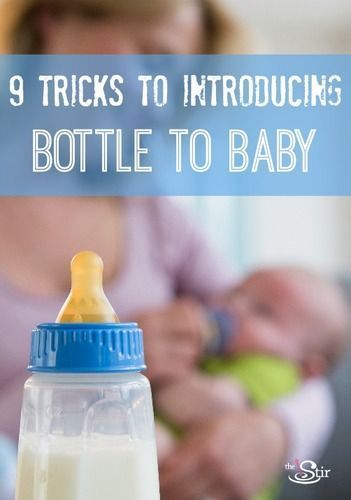 This could be the case even if they have very normal oral motor actions.
This could be the case even if they have very normal oral motor actions.
If your baby is refusing to take a bottle, we’re just a phone call away
Always feel empowered to call your baby’s doctor or make an appointment with them. They can connect you with different types of breastfeeding support, including drop-in breastfeeding support groups and lactation consultants who help with both bottle and breastfeeding issues. They can also refer you to a pediatric rehabilitation specialist.
Our incredible nursing staff is also here for you. HealthPartners patients can call 800-551-0859. Park Nicollet patients can call their clinic directly during regular business hours, or 952-993-4665 if it’s after hours. For questions and advice on new baby care, you can also call our 24/7 BabyLine at 612-333-2229.
Find a doctor who can help
Are you still looking for the right doctor for your new baby? We have hundreds of doctors and clinicians across the Twin Cities, central Minnesota and western Wisconsin, that can help you with all your questions.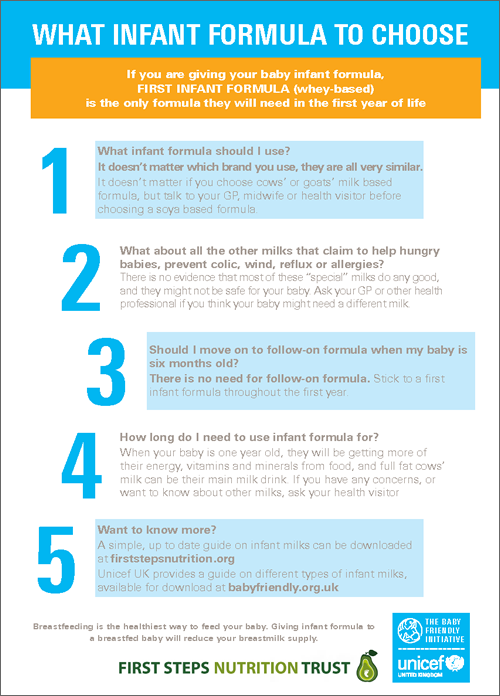
While you may be wondering how to get them to take a bottle today, you’ll get it figured out. Then the question will be: How can I get my child to eat their vegetables?
Baby won't take the bottle | Philips Avent
search support iconSearch Keywords
Home ›› What to do when your baby refuses a bottle
↑ top
any problems. If your breastfed baby refuses a bottle, don't worry. This is a common occurrence in many babies who are used to breastfeeding. Obviously, this can create certain difficulties for moms, especially if you need to return to work in the near future. nine0003
3 Philips Avent products to help you bottle feed:
So why is your baby refusing to bottle and crying? There are many ways to quickly and easily teach a breastfed baby to a bottle. Here are important tips on what to do when your baby refuses a bottle.
Is the baby refusing the bottle? Take a step back
If your baby cries while bottle feeding, the first thing to do is to start over and rethink your feeding approach and technique. Try the following steps when bottle feeding your baby: [1]
Try the following steps when bottle feeding your baby: [1]
- Lift and tilt your baby's head forward. Before inserting the pacifier into the baby's mouth, make sure that the baby's head is raised and tilted over his body to avoid choking: so that the baby does not choke and have the opportunity to burp during bottle feeding.
- Insert the pacifier. Bring the pacifier to the baby's lips and gently guide it into the baby's mouth. In no case do not try to press the nipple on the baby's lips and try to push it into his mouth. After touching the pacifier to the baby's lips, wait for the baby to open his mouth and take the pacifier. nine0036
- Hold the bottle at an angle. Tilt the bottle at an angle so that the nipple is only half full. So the child can eat at his own pace.
- Let the baby burp during and after feeding. It can be useful for a child to burp not only after feeding, but also approximately in the middle of the process. This will help reduce gas or tummy discomfort that your baby may experience from swallowing too much air.
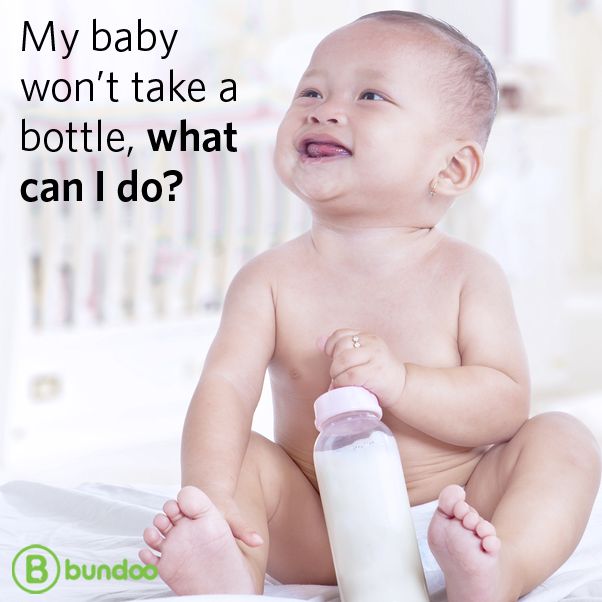
- Stop in time, do not overfeed the baby. If the baby begins to turn his head away from the bottle or closes his mouth, then he is full and you need to stop feeding.
- Perhaps the flow of milk from the nipple to the baby is weak or, on the contrary, too fast, so he is naughty and refuses the bottle. Try changing the nipple to a nipple with a different flow.
Other tips if your baby refuses the bottle
If you've followed the steps above and your baby still refuses the bottle, don't worry. There are other ways to help bottle feed your baby. Here are some simple tricks you can add to your bottle feeding process. nine0029 [2]
1. Remind your child about mom.
Sometimes a child can be fed by someone other than his mother - dad, grandmother or, for example, a nanny. If your baby fusses while bottle feeding, try wrapping the bottle in something that smells like mommy, like a piece of clothing or some fabric.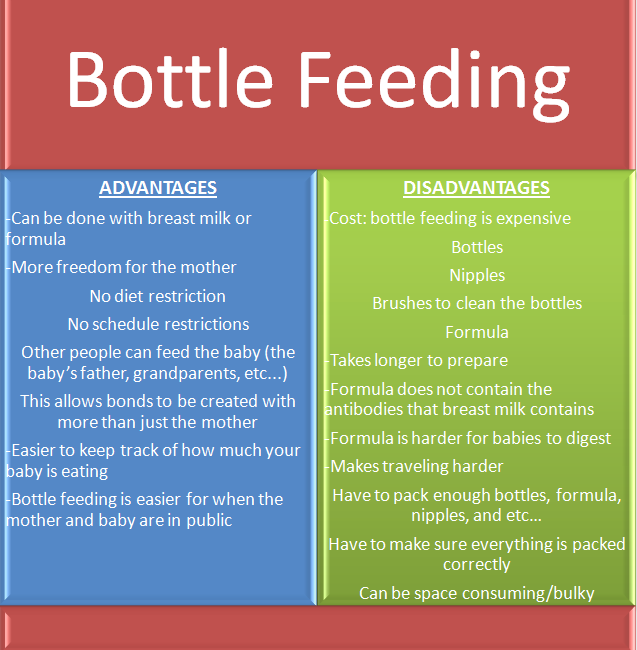 This will make it easier to feed the baby when the mother is not around.
This will make it easier to feed the baby when the mother is not around.
2. Try to maintain skin contact while bottle feeding. nine0006
Some babies need contact with their mother, so try bottle feeding while leaning against you. However, some babies are better at bottle feeding when they are in the exact opposite position than when they are breastfed. For example, there is a position with bent legs. Lay the child on your bent knees, facing you, pointing the child's legs towards your stomach. During feeding, the baby will be able to look at you and contact you in this way. If your baby refuses a bottle, experiment to see which works best. nine0003
3. Move while feeding.
Sometimes all it takes to get your baby to take the bottle is a little wiggle or walk. The next time your baby starts crying while bottle feeding, try moving around a little rhythmically to calm him down.
4. Try changing the milk temperature.
Try changing the milk temperature.
If the baby still does not want to take the bottle, check if the milk in the bottle is too hot or too cold. Before feeding, put some warm breast milk on the inside of your wrist to check the temperature. Milk should be warm, but if it seemed hot to you, just place the bottle for a short while under a stream of cold water. nine0003
Choosing the right bottle for your baby If you plan to combine bottle feeding with breastfeeding, it is advisable to choose bottles with a nipple that will have a wide base as the bottle will grip closer to the breast. Also pay attention to the fact that the nipple is firm and flexible, the child must make an effort to drink from the bottle, as well as from the breast. Give preference to nipples with an anti-colic valve that vents air out of the bottle. nine0003
Natural bottle allows you to combine breast and bottle feeding. 83.3% of babies switch from a Natural bottle to breastfeeding and back. *
*
If you choose a bottle for artificial feeding, traditional bottles are fine, but it is desirable that the nipple is made of a hypoallergenic material, such as silicone, has an anti-colic valve and did not stick together when bottle fed. In case your baby spit up often, then use special bottles with anti-colic and anti-reflux valve, which reduces the risk of spitting up and colic.
Bottle with unique AirFree valve reduces the risk of colic, gas and spitting up. With this bottle, you can feed your baby in an upright or semi-upright position to reduce spitting up. Due to the fact that the nipple is filled with milk and not air during feeding, the baby does not swallow air, which means that feeding will be more comfortable.
Both bottles are indispensable if you want to breastfeed, bottle feed or just bottle feed your baby. nine0003
“My baby refuses to breastfeed but bottle feeds – help!”
Sometimes a baby gets used to bottle feeding and refuses to breastfeed. Therefore, it is important to use bottles that are suitable for combining breastfeeding with bottle feeding. If, nevertheless, you are faced with the fact that the child refuses to take the breast, try using silicone nipple covers to make the transition from the bottle to the breast and back more imperceptible. nine0013
Therefore, it is important to use bottles that are suitable for combining breastfeeding with bottle feeding. If, nevertheless, you are faced with the fact that the child refuses to take the breast, try using silicone nipple covers to make the transition from the bottle to the breast and back more imperceptible. nine0013
Remember that if you want to combine breastfeeding and bottle feeding, it is worth waiting at least a month before offering a bottle, so that you are lactating and have time to get used to each other and develop a breastfeeding regimen.
Breastfeed and bottle feed your baby with pleasure
Remember that it takes a while for your baby to get used to bottle feeding. This is completely normal. If you have to go to work, be sure to set aside enough time to bottle train your baby beforehand. nine0013
Remember that every child is different, so what works for one may not work for another. With a little time and patience, you will find out what works best for your baby when he refuses a bottle.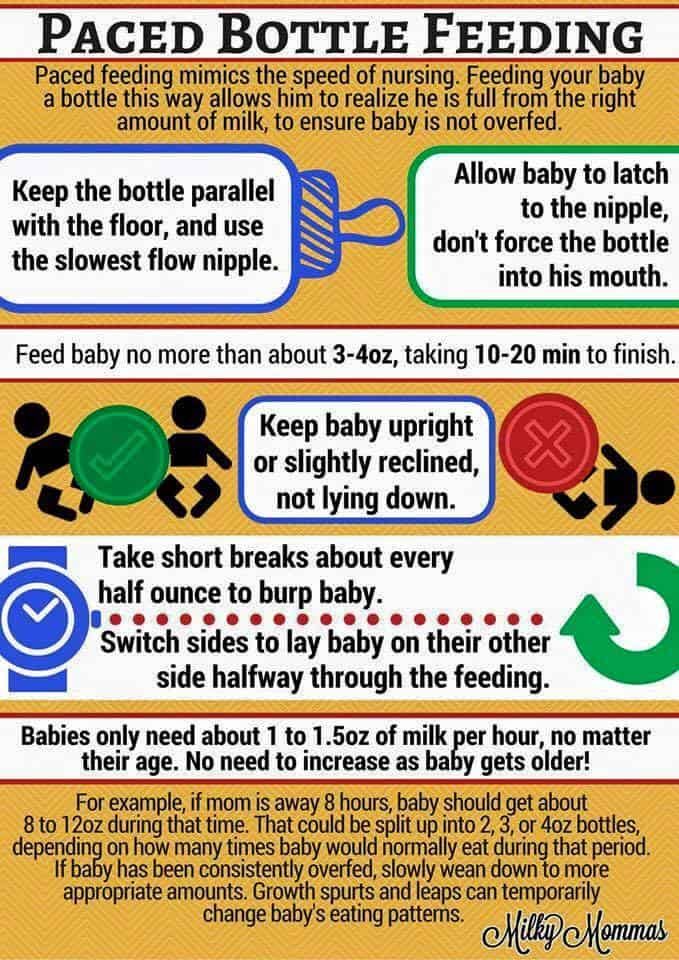
You will identify your child's unique needs. However, if your baby still refuses the bottle after all the steps above, check with your pediatrician.
Articles and tips from Philips Avent
References:
*O.L. Lukoyanova, T.E. Borovik, I.A. Belyaeva, G.V. Yatsyk; NTsZD RAMS; 1st Moscow State Medical University THEM. Sechenova, "The use of modern technological methods to maintain successful breastfeeding", RF, 10/02/2012 3 llli.org - The Baby Who Doesn't Nurse
llli.org - Introducing a Bottle to a Breastfed Baby
Baby+ app
Download the app and track your child's development and growth with trackers and save those special moments forever.
Download app:
You are leaving the Philips Healthcare (“Philips”) official website. Any links to third party websites that may be included on this site are provided solely as a convenience to you. Philips makes no warranties regarding any third party websites or the information they contain.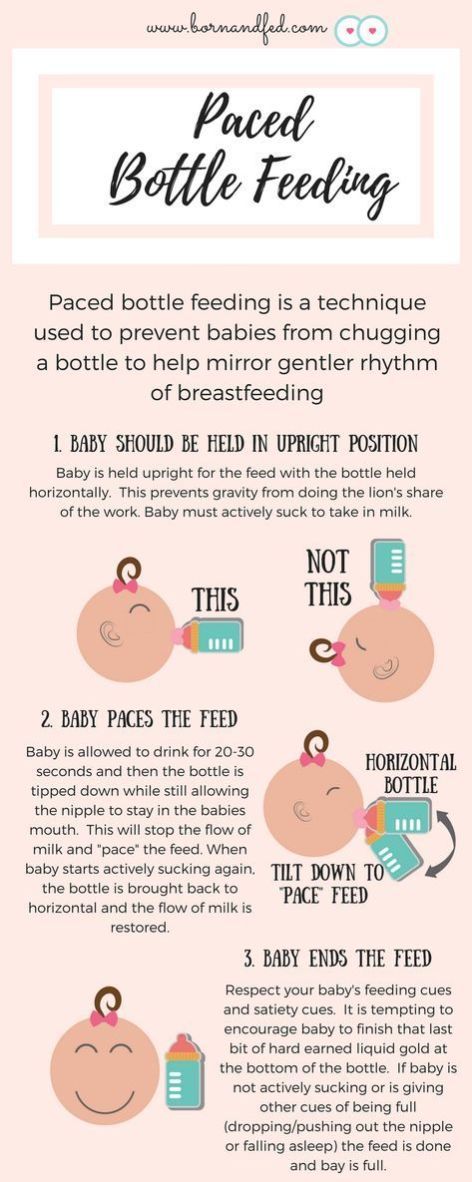 nine0003
nine0003
I understand
You are about to visit a Philips global content page
Continue
You are about to visit the Philips USA website.
I understand
How to bottle train a baby. Bottle feeding
Even if your baby is breastfed and you don't need to feed or supplement with formula, you still need to introduce your baby to the bottle. It will be needed when the baby needs to be given water, herbal tea for colic, or medication. Be prepared for the fact that acquaintance with a new thing may not go very smoothly. nine0003
Spring water Valio still, 1.5 l Read more
There are several reasons why a baby won't take a bottle.
Baby does not want to eat or drink
It simply doesn't occur to many anxious parents that the child is simply not hungry or thirsty at the moment. Do not forget also that the needs of a little person change - at 2 months the baby is not at all interested in the bottle, and at six months, after active games, he will drink from it with great pleasure. nine0003
Do not forget also that the needs of a little person change - at 2 months the baby is not at all interested in the bottle, and at six months, after active games, he will drink from it with great pleasure. nine0003
Uncomfortable temperature fluid
The child is very sensitive to hot or cold drinks. He is used to mother's milk. This means that water, tea or medicine should be heated to a comfortable 36-37 degrees.
Dislike the pacifier
What the baby does not like in one or another nipple - the shape, the rate of fluid intake, the density of the material - is almost impossible to guess. All that's left is to experiment. Offer different types (fortunately, there are a lot of them on sale now - silicone, latex, standard round, flat and orthodontic), something your baby will definitely "taste". Often the baby refuses the bottle because the nipple is cool. Before feeding, it can be dipped in warm water. But if the baby is teething, it is better to cool the nipple on the contrary - it will soothe the tooth in the gums.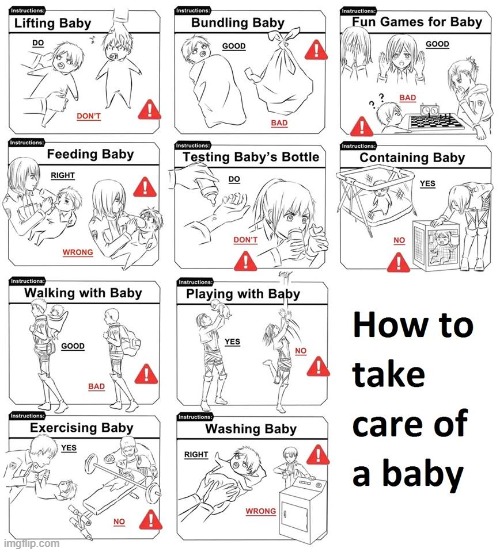 nine0003
nine0003
Child does not like formula or drink
You can experiment with the mixture and offer the baby something new. Try Valio Baby® - they are as close as possible to the composition of breast milk and, unlike many other mixtures, they are made not from powdered, but from fresh cow's milk. It, in turn, is thoroughly tested and exceeds the standards of the European Union and the requirements for premium milk in Russia.
nine0002 #PROMO_BLOCK#How to teach your baby to bottle feed
Get to know the bottle gradually
First, just let the baby examine, touch the bottle. Let it be somewhere nearby more often and become a familiar subject for him. Feed/drink from it once a day at first, then offer more frequently.
Simulate breastfeeding
nine0002 Often a child refuses a bottle because of an uncomfortable position. Hold the baby as if you were breastfeeding him. Place the nipple at the level of your nipple. Be calm and relaxed.
Be calm and relaxed. Choose the right time
Giving a bottle to a well-fed child is a pointless exercise. However, if the baby is very hungry, the innovation will also not be to his liking. He will be naughty and demand his mother's breasts, and not a rubber nipple. nine0003
Ask for help
Sometimes it is easier for a baby to accept a bottle from the hands of a grandmother, nanny or dad. When there is no mother's breast in sight, which means asking for it is pointless.
Be very patient and unobtrusive
Move the pacifier over the baby's lips - it is likely that he will take it himself, following his instinct. If this does not happen, carefully insert the pacifier into the baby's mouth. Make sure he grabs her well. In the future, even when the baby is used to the bottle, do not leave him unattended - the baby may choke. nine0003
3.09 22
Power supplyShare:
Author: Reetta Tikanmäki
Palm oil in baby food
Infant milk formulas are made from cow's milk.


